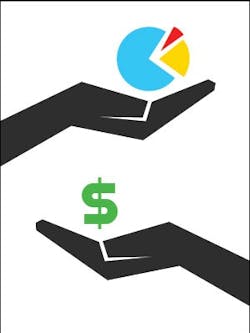Whether you’re considering selling your business, looking to acquire financing, keeping your insurance up to date, or simply want a better grasp of your finances, shop owners need to know the value of their facility, equipment, tools, employees, operational infrastructure and customer database. One way to do that is to look at your shop’s Earnings Before Interest, Taxes, Depreciation and Amortization (EBITDA).
Financial consultant Bradley Mewes discusses how to calculate your shop’s EBITDA and why it’s an important figure to track.
It’s important to know your EBITDA because that’s what you pay the business with. Cash is the blood of the business. EBITDA backs into cash flow by making accounting adjustments, whereas cash flow is actual cash coming in and out. EBITDA is an accounting measurement that makes some adjustments to reflect what the business collected and what the business paid. The second reason it’s important is that it allows investors to compare different companies with different capital structures, equipment, levels of debt, tax structure, ownership, levels of investment in property and equipment, etc., and normalize them. If you have a high EBITDA, you’re more profitable. It’s a good benchmark to compare across industries.
The way EBITDA works is that you have interest, taxes, depreciation and amortization. Those four things can substantially affect the company depending on the capital structure. Your capital structure is how much debt you have versus how much equity you have. For a mid-size business, the reason they take on debt is to grow. It’s not the way we think about debt personally. They take on debt to supercharge their growth. When you take on more debt, it changes your
capital structure.
What EBITDA says is we understand that Company A might take on a lot of debt and have more expenses, but they’re growing much faster as a result. Company B may actually not take on any debt and they’re going to look more profitable, but that’s because they’re not investing in new equipment or new facilities. EBITDA takes out that cost of investment and compares the two companies when we strip that away.
The easiest way to calculate EBITDA is to start with the owner’s profit-and-loss statement or cash flow statement. Then, we subtract the expenses (besides interest and taxes) from the net income to find operating profit. Next, add back in depreciation and amortization expenses.
Depreciation is an accounting method that takes into account the fact that an asset wears out over time. In a business setting, what depreciation would be is if you bought an $800 brand-new tire, you wouldn’t show an $800 expense when you bought it. You would depreciate that tire over the course of three years to account for the wear over the course of the asset’s life.
Amortization is the flip side of that coin. It would be an expense you recognize before you pay it. A common one would be the amortization of vacation time. An employee has a week’s worth of vacation every year and that’s worth say, $1,000. The employee earns that vacation over time as they work. You wouldn’t want to wait to expense the vacation until the employee uses it. If it’s worth $20 every week, you would amortize or expense the vacation $20 every single week.
Both depreciation and amortization relate to non-cash expenses. They’re expenses that show up on your income statement but they’re not necessarily paid for when you see them on your income statement. There are depreciation and amortization schedules that a CPA can create based on your assets in the business. That way, you can input them on a monthly basis when you are calculating this information.
The total is your company’s adjusted net profit or discretionary earning. At this point, you would look at your adjustments. Your adjustments would be if you have a car that’s a personal car but every once in a while you use it in the business. You would take out your non-recurring or non-operational expenses. Those are expenses that the business has but that would not recur under new ownership. The owner’s salary is often one of those.
That’s how you calculate the dollar amount. Then you look at it as a percentage of sales. It’s the same way you look at operating income or gross profit as a percentage of sales. A healthy EBITDA would be anywhere from
15–20 percent.
I look at my shop’s EBITDA monthly. The number can fluctuate. If your EBITDA is low, you should look at if you have enough sales coming through the door. If you have enough sales, then take a look at your overhead expenses, the cost of your building and your administrative staff.
